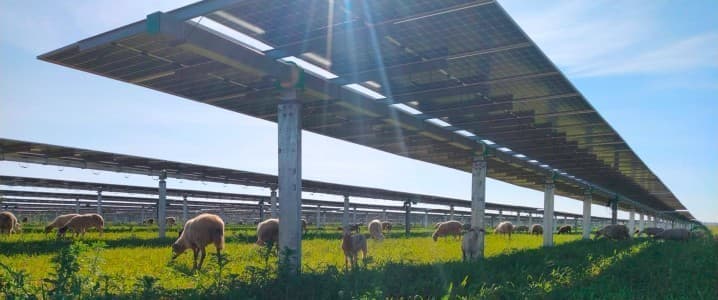As governments around the world strive to make the green transition, companies around the world are investing heavily in research and development of innovative ways to improve renewable energy production. New technologies are making conventional renewable energy projects, such as solar and wind farms, much more efficient as companies build stronger panels and larger turbines. Now, a German team believes they have found a new light-harvesting system that could dramatically increase solar energy production.
Conventional solar panels are made of silicon-based solar cells that absorb light across the entire visible spectrum, but only to a limited extent. These solar cells must be several micrometers thick to absorb enough protons to generate electricity. This makes them heavy, expensive, and difficult to install in tight spaces. In contrast, thin-film solar cells, made of organic dyes, are both cheaper and lighter, at just 100 nanometers thick. However, they are only able to absorb a small portion of the solar spectrum. Scientists have been searching for years for a solution to make solar panels more efficient while reducing their weight and cost.
Scientists at the University of Würzburg in Bavaria, Germany, believe they have discovered the structure needed to dramatically improve solar energy production. They recently published a study in the journal Chem demonstrating the use of a URPB (ultraviolet, red, violet, and blue) system, based on the photosynthetic antennae of plants and bacteria that can efficiently capture sunlight. The URPB model uses four different dyes stacked in a precise configuration that allows them to efficiently capture light in the UV, visible, and near-infrared wavelengths.
Related article: Standard Chartered: Oil price rally to extend well beyond $90 a barrel
During the test phase, the research team was able to convert 38 percent of the incoming light into useful energy. The four dyes alone managed to convert less than one percent to a maximum of three percent. Frank Würthner, Professor of Chemistry at JMU, explains: “Our system has a band structure similar to that of inorganic semiconductors. This means that it absorbs light panchromatically across the entire visible range. And it uses the high absorption coefficients of organic dyes. As a result, it can absorb a large amount of light energy in a relatively thin layer, similar to daylight harvesting systems.”
The next challenge will be to extend the process to commercial use. While the technology has already shown good results in the laboratory for producing energy, implementing a new technology in a real environment always poses greater challenges.
This is the latest technology being tested around the world to improve solar power generation. Encouraged by higher levels of government funding and financial incentives, such as tax breaks, and driven by the need to build global renewable energy capacity to reduce fossil fuel consumption, companies around the world are investing heavily in solar research and development. Solar power generation has made leaps and bounds over the past decade. Solar panel efficiency has increased from about 17 percent in 2012 to between 22 and 29 percent today, while production costs have fallen and the price per watt of solar panels has fallen from about $5 in 2000 to less than 50 cents today.
According to the International Renewable Energy Agency (IRENA), solar photovoltaics (PV) are the fastest growing energy source globally, having grown approximately 26-fold since 2010. As of the end of 2022, global installed solar PV capacity stood at 1,047 GW, with 191 GW added in 2022 alone.
Earlier this year, Turkish researchers published a study showing the potential of a semi-spherical photovoltaic solar cell structure that they say could absorb up to 66% more light than conventional flat panels. The team is now looking to produce a prototype to test the technology, which looks promising in computer simulations.
The use of perovskite solar cells (PSCs) is also generating optimism due to their high performance and low production costs. PSCs have made great strides in recent years, with significant improvements in their efficiency, from about 3% in 2009 to over 25% today. This has encouraged the U.S. Department of Energy (DoE) and other public and private institutions around the world to invest heavily in improving PSC technology.
So far, most PSC testing has been done in the lab. However, a team of American researchers, led by the University of North Carolina, is now conducting outdoor testing. The U.S. Department of Energy’s Perovskite PV Accelerator for Commercializing Technologies (PACT) center successfully ran the technology outdoors for 29 weeks and achieved an operating efficiency of over 16 percent. Laura Schelhas, a chemistry researcher at NREL, explained: “Real-world demonstration is a critical step toward commercialization, and we hope that by providing these capabilities, researchers and companies can leverage this data to improve reliability.”
By Felicity Bradstock for Oilprice.com
Other articles to read on Oilprice.com:


